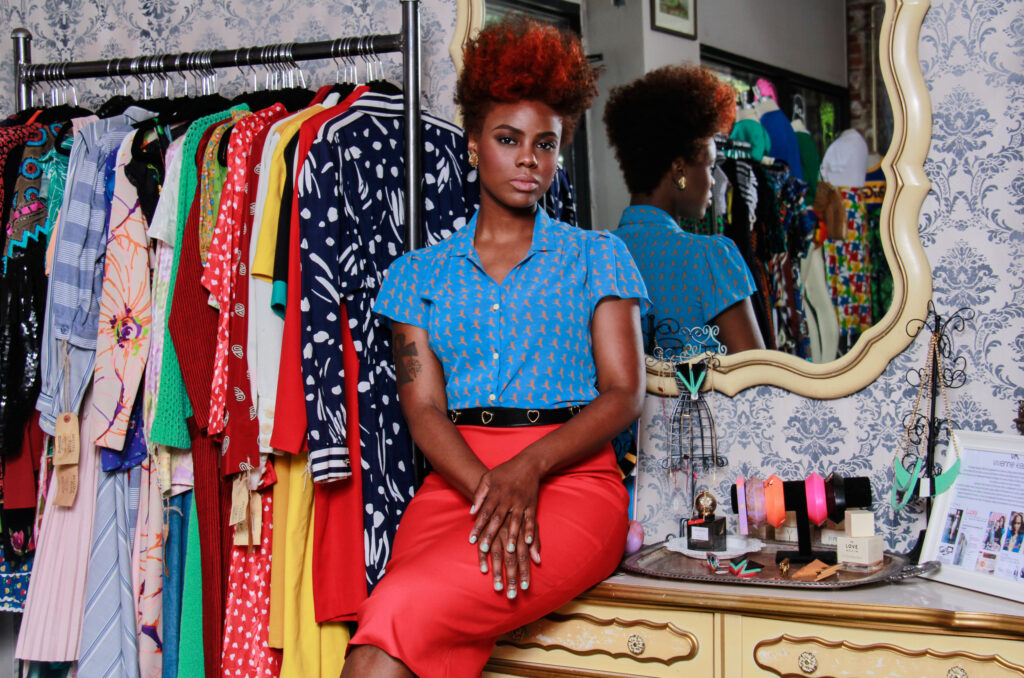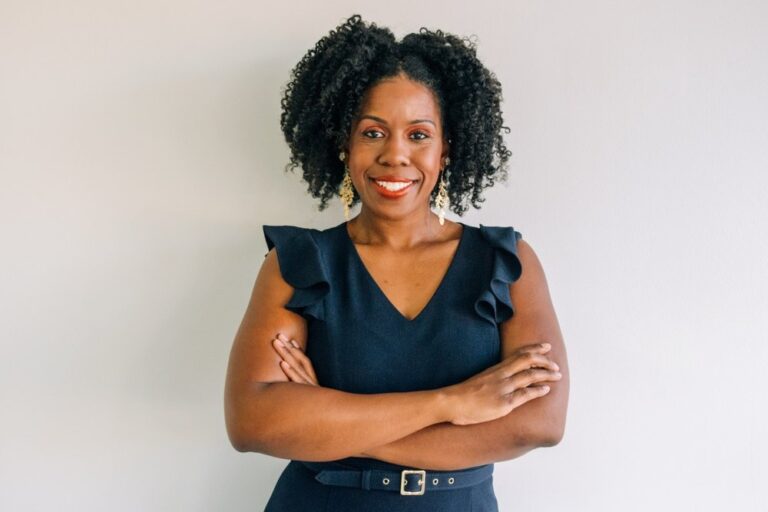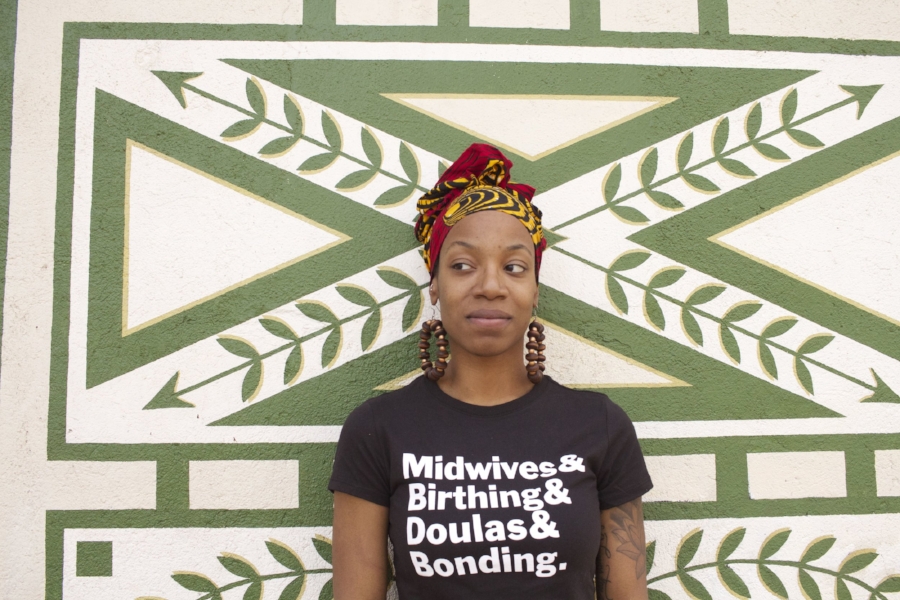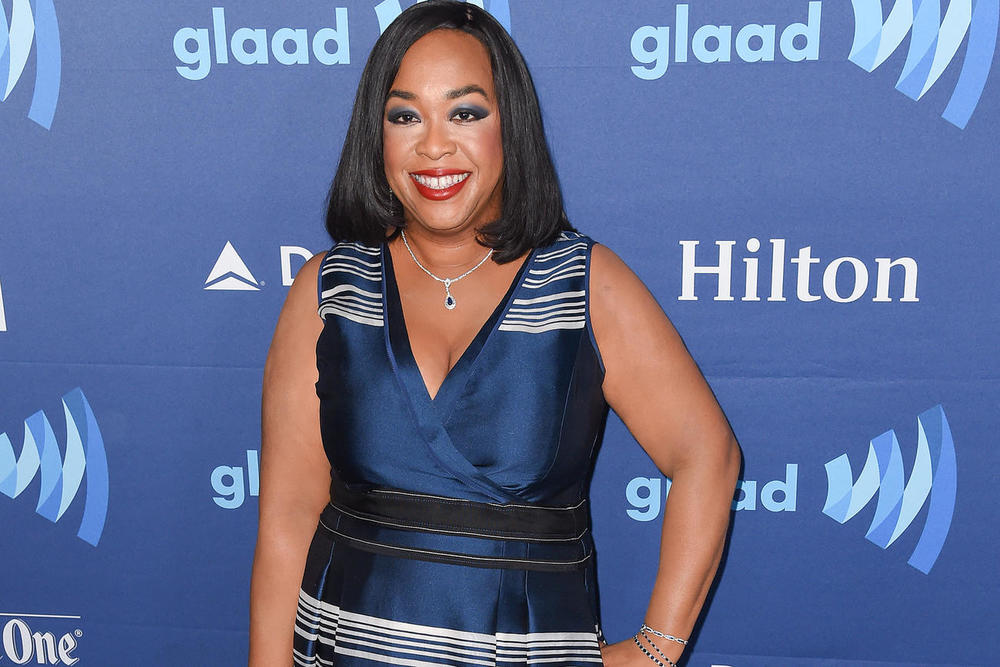A consummate businesswoman, Khalilah Beavers, 33, knows the importance of good customer service. Her Brooklyn-based boutique Shirley + Alice Vintage, named after her stylish grandmothers, radiates the same warmth and friendliness as its owner. She pauses during a conversation to chat with an incoming customer—“Can I help you find anything?”—and makes a point to greet everyone who comes in. Her boutique is the perfect place to while away an afternoon listening to music while finding quality pieces from a rotating roster of fashion and jewelry designers.
Shirley + Alice Vintage has been a dream Beavers has had since 2002, but was only recently able to bring to fruition.
“I had downtime [from] styling when I was pregnant,” she explains. “I had the time to do it.”
It’s something that’s mine 100 percent. It doesn’t depend on a client and what they want. The store allows me to share my style with others.
Opening up shop took some hard work, which isn’t anything new for Beavers—she spent years in retail working for stores like Express and Tommy Hilfiger, and also as a server and waitress, before becoming a fashion assistant to a stylist. While working with her mentor, Beavers built her own client base and gained a reputation for her professionalism and grasp of men’s style, attracting the likes of NBA stars Carmelo Anthony and J.R. Smith of the New York Knicks and Brandon Bass of the Boston Celtics.
Although store owner is her newest title, Beavers says it was a natural progression from her work as a stylist. Much like the looks she pulls together for some of the sports world’s most dapper men, Shirley + Alice Vintage is perfect for “anyone who loves to be unique,” Beavers says.
The store recently celebrated its one-year anniversary in March. mater mea asked Beavers to explain just how she did it, and got some insights on the stylist/entrepreneur’s career path, goals, and her five tips for anyone who wants to open their own store.

Q&A
How did you transition from styling to opening a boutique?
It was more of a juggling than a transition. I had a showroom and spent 1.5 to two years doing trunk shows before I opened the store. The showroom was in a mansion converted into a school; I had a ton of clothes and needed space.
I would have a monthly event [and] rent out the entire mansion. I would have appetizers, bring in other designers, and have a DJ to bring in foot traffic. It became something people were excited to come to, especially during the colder months. It was super cute.

What was your timeline like from having the idea to putting it all together, and how did you make it happen?
Initially I wanted to get a space in six months, but it didn’t happen until a year later. After I found the location, the plan was to open in two months and I did that. I was looking for a good area, one that was close to my husband’s gallery. I was also looking for a good amount of space and foot traffic so I [could] get customers walking in. I didn’t get a realtor: My husband and I ended up finding a space a block away from his gallery that was up for rent. We went and talked to the landlord directly and that was it.
We didn’t really plan it out and save up money before we opened the store. (Laughs) I already had the clothing from my showroom so we only really needed to pay for the space. We had the money, so my husband and I just did it. I found a friend to help me with the interior design work. The most time consuming [thing] was taking down walls, painting, and putting up wallpaper throughout the store.
Where do you source the clothes and accessories from?
I’ve met most of the designers through travel and my styling work. One particular designer used to be my assistant, one I’ve known for seven or eight years. Mainly it’s through being in the industry for years and knowing people.

What were your ideas about opening up a store prior to doing it, and what was the reality actually like?
By being in styling and already having a showroom for over a year—and [working in] retail before that—I already had some idea about what it would be like to open the store, so the reality wasn’t too different from what I thought. As a small-business owner you wear a lot more hats than corporate-business owners. Scheduling my time, being able to juggle it all, is a challenge. Some other challenges were just opening the store and maintaining it. Ideally I want a full staff, but right now there are usually two to three people working in the store, including myself. That means that we have to do everything from washing the windows [to] sweeping up.
What are your goals for the store, and how do you intend to meet them?
My goals are for the store to become a destination spot and to be known as a huge success. To achieve that, we have to maintain great customer service and make sure the store stays neat and stocked. Hiring within the community is also a way to reach my goals because the success of the business depends a lot on community support; hiring within would help both the store and the people living in the area.

How did you get people to the store?
Having brand awareness is really important so customers know what kind of store it is and help market [it] to the right people. Social media is definitely a way to reach people; email blasts and handing out postcards are also good ways. Websites are important and you can also put posters in stores throughout the community, which is another reason why community support is helpful.
What do you think are the benefits of owning a store versus styling?
It’s something that’s mine 100 percent. It doesn’t depend on a client and what they want. The store allows me to share my style with others. Another benefit is the neighborhood; since I don’t have to travel to the city, I have more time to spend with my family.
Oh, [and] being able to help indie designers sell their pieces and to have a platform, to have a space in Brooklyn that people can run to. It gives me a sense of validation and fulfillment that I really love.

What advice would you give someone who wants to open their own store?
Have a plan.
If it’s your dream, don’t give up.
Again, having a business plan is crucial.
Find your niche.
Make sure you love what you’re doing. If you have a shoe store, make sure you love shoes and love feet.
What, if anything, do you wish you’d known before you started the process of opening the store?
I wish I had known how much time it would take away from my family. I was already styling so I knew how the business works, but the amount of time that both jobs take away from my family is something I wish I’d known.
How have you incorporated your family life into your schedule now that you’re even busier than before?
They’re coming in to the shop. My husband owns an art gallery a block away and many of the businesses on the block are black-owned, so my children get to see that. We try to instill that education is important, but you can still do what you want to do. My son is 3, but still grasps what’s happening in our lives. He says things like, “I want to go to your store,” or “I want to go to daddy’s gallery,” so he really gets it.
For more on Khalilah Beavers’ motherhood and career journey, read her feature on mater mea.
















